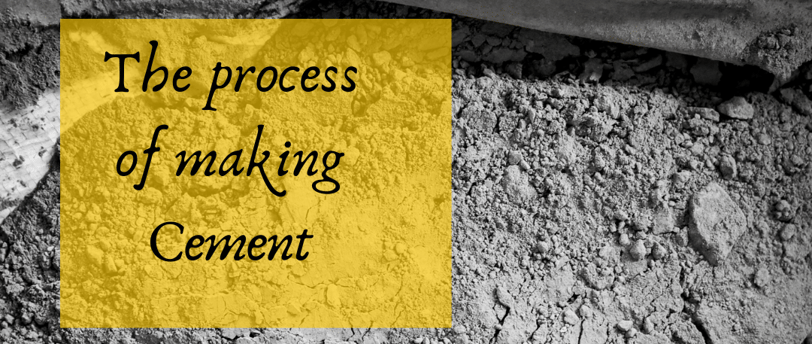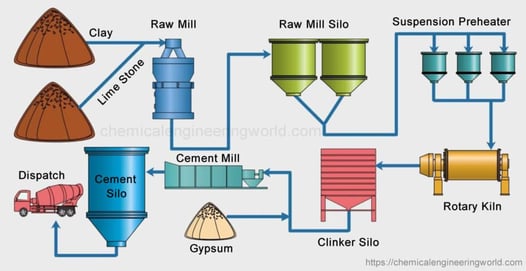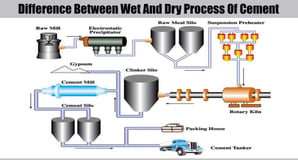
The process of making Cement


The process of making cement involves several distinct stages, each crucial in its own way. Here's a detailed overview of how cement, particularly Portland cement, is made:
Extraction of Raw Materials: The primary raw materials used in cement manufacturing are limestone, clay, and silica-rich materials like sand. These materials are typically obtained from quarries or mines.
Crushing and Grinding: The raw materials are crushed and finely ground into a raw meal. This process usually involves crushers to break down the larger pieces and mills to grind them into a fine powder. The resulting raw meal is a blend of limestone, clay, and other materials in the correct proportions.
Preparation of Raw Mix: The finely ground raw meal is blended to achieve a uniform composition. The specific proportions of limestone, clay, and other additives depend on the desired properties of the final cement product.
Clinker Production: The prepared raw mix is fed into a rotary kiln, a large cylindrical furnace. Inside the kiln, the raw mix undergoes a series of complex chemical reactions at high temperatures (about 1450°C or 2640°F). These reactions result in the formation of small, hard nodules called clinker. The key reactions include the decomposition of limestone to form calcium oxide (lime) and the formation of silicates and aluminates from the raw materials.
Cooling: The hot clinker is then cooled rapidly to ambient temperature to prevent it from re-absorbing moisture and to stabilize its chemical composition. Various cooling techniques, such as air cooling or water quenching, may be employed.
Grinding: The cooled clinker is finely ground along with a small amount of gypsum (calcium sulfate dihydrate) in a cement mill. The addition of gypsum regulates the setting time of the cement and ensures desirable properties like strength and workability. The resulting fine powder is known as cement.
Storage and Packaging: The finished cement is stored in silos to await packaging. It may be shipped in bulk or bagged into sacks for distribution to construction sites or retailers. Quality control measures are applied throughout the manufacturing process to ensure the final product meets the required standards.
It's important to note that the production of cement is energy-intensive and contributes to environmental impacts, such as carbon dioxide emissions. Efforts to reduce these impacts include using alternative fuels and raw materials, improving energy efficiency, and developing more sustainable cement formulations.
The process of making Cement




